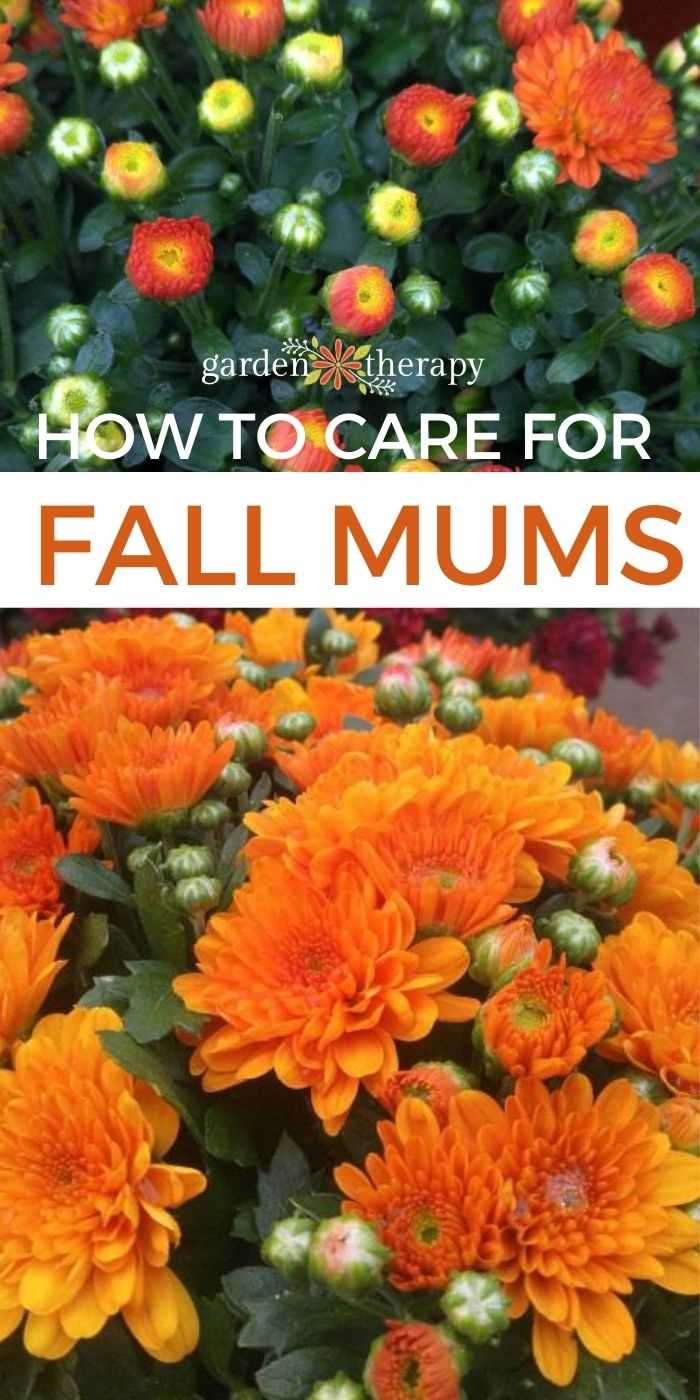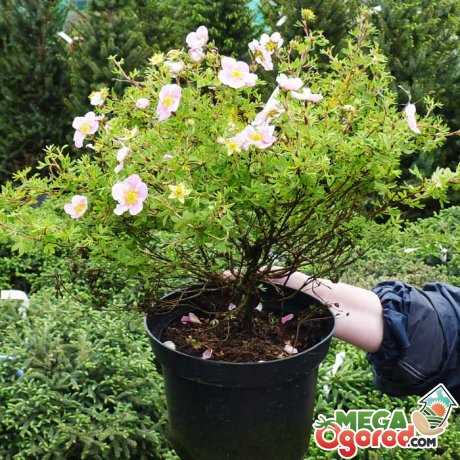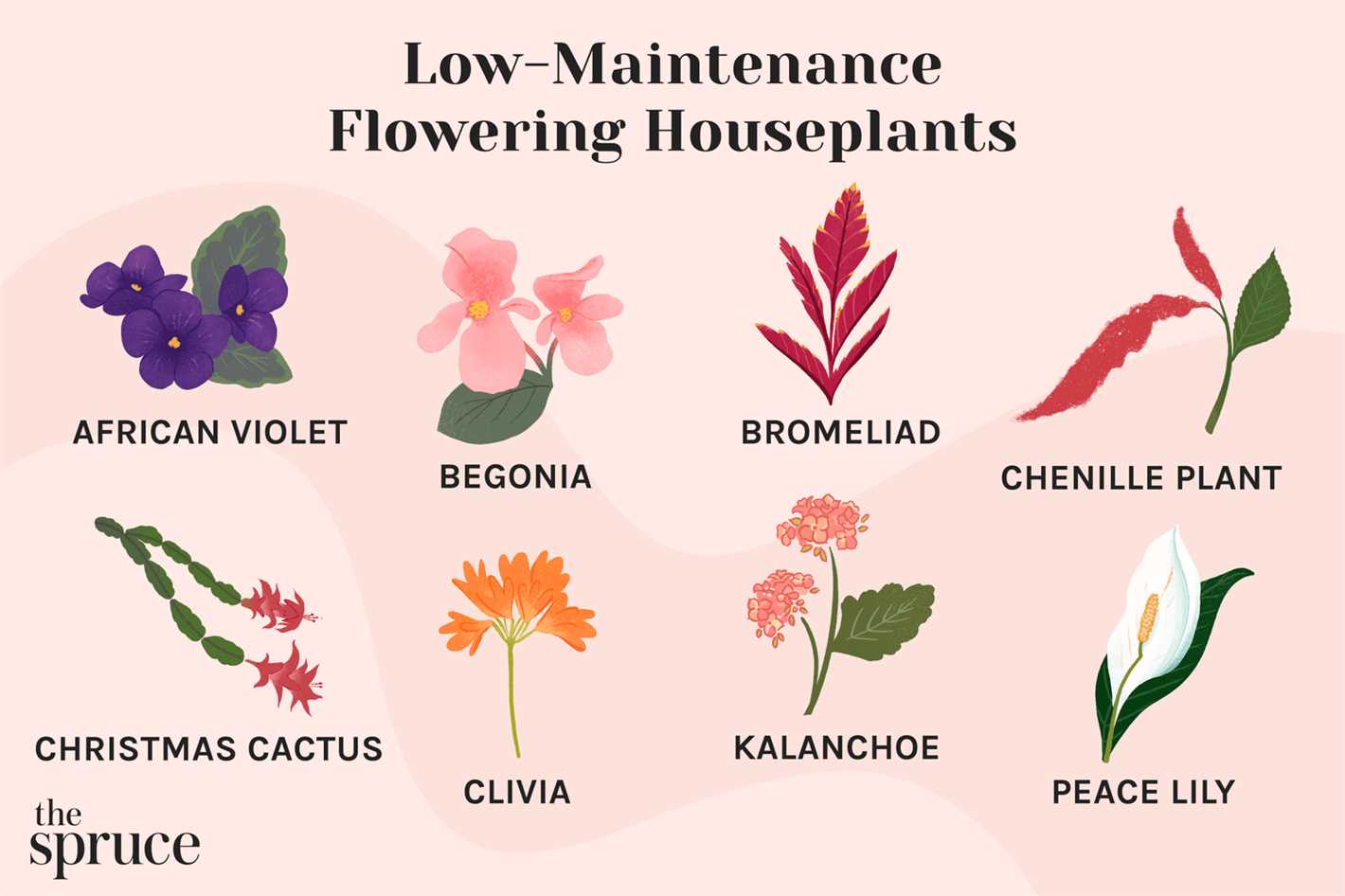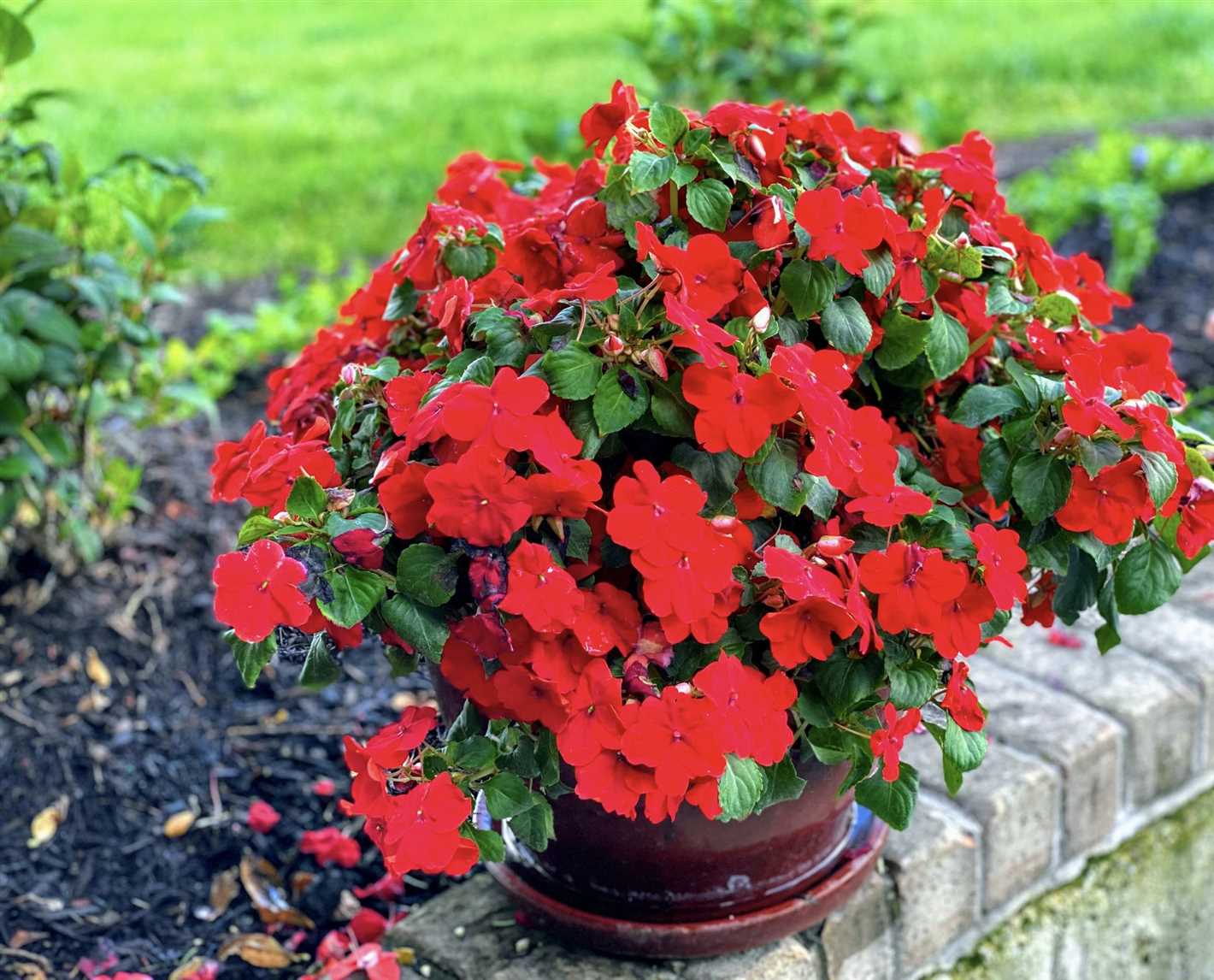- Tips for Maintaining Ampel Plants
- 1. Choose the right location
- 2. Provide adequate water
- 3. Fertilize regularly
- 4. Prune and deadhead
- 5. Provide support
- 6. Protect from pests and diseases
- 7. Consider temperature and climate
- 8. Provide winter care
- Choosing the Right Varieties
- Providing Adequate Sunlight
- Watering and Fertilizing Techniques
- Watering
- Fertilizing
- Pruning and Trimming
- 1. Choose the Right Tools
- 2. Prune in the Right Season
- 3. Remove Dead or Diseased Branches
- 4. Trim for Shape and Size
- 5. Prune After Blooming
- 6. Sterilize Your Tools
- 7. Dispose of Pruned Material Properly
- Protecting Against Diseases and Pests
- 1. Regularly inspect your plants
- 2. Provide proper air circulation
- 3. Water properly
- 4. Use organic pest control methods
- 5. Remove diseased or infested plants
- 6. Mulch around the base of the plants
- 7. Practice crop rotation
- 8. Keep your garden clean
- Supporting Structures and Trellises
- 1. Sturdy Materials
- 2. Proper Size and Height
- 3. Easy Installation
- 4. Adjustable Features
- 5. Spacing and Placement
- 6. Regular Maintenance
- Monitoring Temperature and Humidity
- Troubleshooting Common Issues
- 1. Wilting Leaves
- 2. Yellowing Leaves
- 3. Lack of Blooming
- 4. Pests and Diseases
- 5. Leggy Growth
- 6. Dropping Buds
- Questions and Answers:
- What are some tips for maintaining ampel plants?
- How often should ampel plants be watered?
- What type of fertilizer should be used for ampel plants?
- When is the best time to prune ampel plants?
- How much sun exposure do ampel plants need?
- Can ampel plants be grown indoors?
- Videos: 10 Long Blooming Perennial Flowers: Add Vibrant Colors to Your Garden All Season Long
Summer is the perfect time to beautify our outdoor spaces with colorful and vibrant ampel plants. However, it’s important to know how to properly care for these plants to ensure they continue to bloom until autumn. With the right maintenance techniques, you can enjoy a stunning display of flowers and foliage all season long.
Ampel plants, also known as hanging plants or trailing plants, are wonderful additions to any garden or balcony. Their cascading growth habit adds a touch of elegance and charm to any space. To keep these plants looking their best, it’s important to provide them with the right amount of water, sunlight, and nutrients.
One important tip for maintaining ampel plants is to water them properly. These plants prefer to be kept evenly moist, but not waterlogged. Be sure to water them regularly, especially during hot and dry periods. However, it’s important to avoid overwatering, as this can lead to root rot and other diseases. A good rule of thumb is to water when the top inch of soil feels dry to the touch.
In addition to water, ampel plants also need an adequate amount of sunlight. Most varieties prefer bright, indirect light, so placing them in a location with dappled sunlight or partial shade is ideal. Too much direct sunlight can scorch the leaves, while too little light can result in leggy growth and reduced flowering.
Tips for Maintaining Ampel Plants
Ampel plants are beautiful trailing plants that can add a touch of elegance to any garden. To ensure continuous blooming until autumn, it is important to provide proper care and maintenance. Here are some tips to help you maintain your ampel plants:
1. Choose the right location
Choose a location that provides adequate sunlight for your ampel plants. Most varieties prefer full sun or partial shade. Avoid placing them in areas with excessive shade, as this can inhibit blooming.
2. Provide adequate water
Water your ampel plants regularly, especially during the hot summer months. Keep the soil consistently moist, but not soggy. Avoid overwatering, as this can lead to root rot. Use a well-draining potting mix to ensure proper drainage.
3. Fertilize regularly
Feed your ampel plants with a balanced fertilizer every 2-4 weeks during the growing season. This will provide them with the necessary nutrients to support continuous blooming. Follow the instructions on the fertilizer packaging for proper dosage.
4. Prune and deadhead
Regularly prune your ampel plants to promote bushier growth and prevent them from becoming leggy. Remove any dead or yellowing leaves and flowers to encourage new growth. Deadheading, or removing spent flowers, will also stimulate additional blooming.
5. Provide support
Some ampel plants, such as trailing petunias or ivy, may benefit from the support of a trellis, fence, or hanging basket. This will help them grow in a more orderly fashion and prevent them from becoming tangled or damaged.
6. Protect from pests and diseases
Monitor your ampel plants regularly for signs of pests, such as aphids or spider mites. Treat any infestations promptly with insecticidal soap or a suitable pesticide. Additionally, ensure good air circulation around the plants to prevent fungal diseases.
7. Consider temperature and climate
Keep in mind the temperature and climate of your area when selecting ampel plants. Some varieties are more tolerant of heat or cold, while others thrive in specific conditions. Choose varieties that are well-suited to your climate for better success.
8. Provide winter care
If you live in a region with cold winters, you may need to provide extra care to protect your ampel plants. Consider bringing them indoors or providing a frost cover to prevent frost damage. Consult local gardening resources for specific instructions.
By following these tips, you can ensure that your ampel plants remain healthy and vibrant, providing continuous blooming until autumn. Enjoy the beauty they add to your garden or outdoor space!
Choosing the Right Varieties
When it comes to selecting ampel plants for your garden, it’s essential to choose the right varieties that are well-suited to your climate, soil type, and growing conditions. Here are some factors to consider when making your selection:
- Hardiness: Make sure to choose ampel plants that are hardy enough to withstand the temperature extremes of your region. Check the USDA hardiness zone map to determine the suitable varieties for your area.
- Sunlight Requirements: Different ampel plants have different sunlight needs. Some varieties thrive in full sun, while others prefer partial shade. Consider the amount of sunlight your garden receives throughout the day and choose plants accordingly.
- Soil Type: Ampel plants have varying soil preferences. Some prefer well-draining soil, while others thrive in moist or sandy soil. Check the soil pH and texture of your garden and select plants that are best suited to those conditions.
- Growth Habit: Consider the height, spread, and growth habit of the ampel plants you choose. Some varieties grow tall and cascading, while others have a more trailing or spreading habit. Think about how you want the plants to look in your garden and select accordingly.
- Color and Bloom Time: Ampel plants come in a wide range of colors and bloom times. Consider the color palette of your garden and choose plants that will complement the existing flowers and foliage. Also, select varieties that bloom at different times throughout the season to ensure continuous blooming until autumn.
- Disease Resistance: Check for disease resistance when choosing ampel plant varieties. Some plants are more susceptible to certain diseases, while others are more resistant. Selecting disease-resistant varieties can help reduce the risk of plant infections and improve overall plant health.
By considering these factors and selecting the right ampel plant varieties for your garden, you can ensure that your plants will thrive and provide continuous blooming until autumn.
Providing Adequate Sunlight
In order to ensure continuous blooming until autumn, it is essential to provide ampel plants with adequate sunlight. Sunlight is a crucial factor for the growth and health of these plants as it helps in the process of photosynthesis, which is necessary for the production of energy and nutrients.
Here are some tips to provide adequate sunlight for ampel plants:
- Find the right location: Choose a location that receives at least 6 hours of direct sunlight per day. Avoid areas with excessive shade or those that are exposed to strong winds.
- Position the plants correctly: Hang the ampel plants in a spot where they can receive maximum sunlight. Ensure that they are not obstructed by nearby plants or structures.
- Rotate the plants: If your ampel plants are potted, consider rotating them every few days to ensure even sunlight exposure on all sides.
- Monitor the sunlight: Regularly observe the plants and check if they are receiving enough sunlight. If you notice any signs of sunburn or wilting, adjust the placement or provide some shade during the hottest part of the day.
By providing adequate sunlight to your ampel plants, you can ensure their healthy growth and continuous blooming until autumn.
Watering and Fertilizing Techniques
Watering
Proper watering is essential for the health and continuous blooming of ampel plants. Here are some tips to ensure your plants receive the right amount of water:
- Check the moisture level of the soil regularly by sticking your finger into the surface. If it feels dry, it’s time to water.
- Water deeply, ensuring the moisture reaches the roots. Shallow watering can lead to shallow root growth.
- Avoid overwatering, as it can cause root rot and other water-related issues. Make sure the soil drains well and does not become waterlogged.
- Water early in the morning or late in the afternoon to prevent evaporation. This allows the plants to absorb the water effectively.
Fertilizing
Ampel plants require proper fertilization to stay healthy and promote continuous blooming. Here are some techniques to keep in mind:
- Use a balanced, slow-release fertilizer with a ratio of 10-10-10 or 14-14-14 to provide essential nutrients.
- Fertilize every 4-6 weeks during the growing season, starting in spring and continuing until late summer.
- Follow the manufacturer’s instructions for application rates and methods.
- Avoid over-fertilizing, as it can lead to excessive foliage growth at the expense of blooming.
- Water the plants before and after fertilizing to help distribute the nutrients evenly and prevent the roots from getting burned.
By following these watering and fertilizing techniques, you can ensure that your ampel plants remain healthy, vibrant, and in continuous bloom until autumn.
Pruning and Trimming
Pruning and trimming your ampel plants is essential for ensuring continuous blooming until autumn. It helps promote healthy growth, maintain a desirable shape, and prevent diseases. Here are some tips on how to properly prune and trim your ampel plants:
1. Choose the Right Tools

Before you start pruning, it’s important to have the right tools on hand. Make sure you have sharp and clean pruning shears or scissors, as well as gloves to protect your hands.
2. Prune in the Right Season
It’s best to prune your ampel plants in early spring, before they start actively growing. This allows them to recover and grow new shoots before the blooming season begins.
3. Remove Dead or Diseased Branches
Inspect your ampel plants and remove any dead, broken, or diseased branches. These can affect the overall health and appearance of the plant and should be removed to encourage new growth.
4. Trim for Shape and Size
Trim your ampel plants to maintain a desired shape and size. This can be done by cutting back excessive growth or removing long, straggly branches. This will help promote a denser and more compact growth habit.
5. Prune After Blooming
After the blooming season, you can prune your ampel plants to remove faded flowers and encourage new blooms. This is known as deadheading and helps redirect the plant’s energy into producing new flowers.
6. Sterilize Your Tools
After each pruning session, make sure to sterilize your tools to prevent the spread of diseases. You can use rubbing alcohol or a disinfectant solution to clean the blades of your pruning shears or scissors.
7. Dispose of Pruned Material Properly
Dispose of the pruned branches and leaves properly to prevent the spread of diseases. Bag them up and throw them in the trash or recycle them if appropriate.
By following these pruning and trimming tips, you can maintain your ampel plants and ensure continuous blooming until autumn. Remember to always be careful when handling sharp tools and to regularly inspect your plants for any signs of disease or pest infestation.
Protecting Against Diseases and Pests
Keeping ampel plants healthy and free of diseases and pests is essential for their continuous blooming until autumn. Here are some tips to protect your plants:
1. Regularly inspect your plants

Inspect your ampel plants regularly, especially the leaves, stems, and flowers. Look for signs of diseases or pests such as discolored spots, holes, or wilting. Early detection is key to preventing the spread of diseases.
2. Provide proper air circulation
Ampel plants prefer good air circulation, which helps to prevent the buildup of moisture and reduces the risk of fungal diseases. Avoid crowding the plants and ensure they have enough space to grow and breathe.
3. Water properly
Water the plants in the morning to allow the foliage to dry throughout the day. Avoid overwatering as it can lead to root rot and other diseases. Make sure the soil is well-drained to prevent waterlogging.
4. Use organic pest control methods

When dealing with pests, opt for organic pest control methods instead of harsh chemicals. Use natural remedies like neem oil, insecticidal soap, or homemade solutions like garlic or chili pepper spray. These methods are safer for the environment and help maintain the balance of beneficial insects in your garden.
5. Remove diseased or infested plants
If you notice any plants that are severely diseased or infested, remove them immediately to prevent the spread of diseases to healthy plants. Dispose of them properly to avoid contaminating other areas of your garden.
6. Mulch around the base of the plants
Applying a layer of organic mulch around the base of the plants helps to retain moisture, regulate soil temperature, and suppress weed growth. Mulch also acts as a barrier against certain pests and diseases.
7. Practice crop rotation
If you grow ampel plants in containers or have limited garden space, practice crop rotation. Avoid planting the same type of plants in the same location year after year, as this can lead to the buildup of diseases and pests in the soil. Rotate your plants to different areas of the garden to maintain soil health.
8. Keep your garden clean
Regularly clean up fallen leaves, debris, and dead plant material to prevent the accumulation of disease-causing organisms. Dispose of them properly or consider composting if suitable.
By following these tips, you can protect your ampel plants from diseases and pests and ensure their continuous blooming until autumn.
Supporting Structures and Trellises
Supporting structures and trellises are essential for ampel plants to ensure their continuous blooming until autumn. These structures provide support and stability for the plants, preventing them from sagging or falling over due to their trailing and climbing nature. Here are some tips on choosing and using supporting structures and trellises for your ampel plants:
1. Sturdy Materials
When selecting a supporting structure or trellis, choose one made of sturdy materials such as metal or strong plastic. These materials can withstand the weight of the plants and are more durable compared to wooden structures.
2. Proper Size and Height
Ensure that the supporting structure or trellis is of appropriate size and height for your ampel plants. It should be tall enough to accommodate the growth of the plants and provide them with enough space for their trailing or climbing habit.
3. Easy Installation
Opt for supporting structures or trellises that are easy to install and can be securely anchored to the ground or attached to walls or fences. This makes it convenient to set up and adjust as needed.
4. Adjustable Features
Consider choosing supporting structures or trellises with adjustable features such as extendable poles or expandable frames. These features allow you to adapt the structure to the growth of your ampel plants and provide them with adequate support throughout the season.
5. Spacing and Placement
Proper spacing and placement of supporting structures or trellises are crucial for the healthy growth and blooming of ampel plants. Ensure that the structures are evenly spaced to provide sufficient support and avoid overcrowding. Place them strategically to allow the plants to receive ample sunlight and air circulation.
6. Regular Maintenance
Regularly inspect and maintain the supporting structures or trellises to ensure their stability and integrity. Trim any excess growth that may obstruct the structure and remove any debris or accumulated dirt that can compromise the performance of the support system.
By choosing appropriate supporting structures and trellises and maintaining them properly, you can prolong the blooming period of your ampel plants and enjoy their beauty until autumn.
Monitoring Temperature and Humidity
To ensure the continuous blooming of ampel plants until autumn, it is important to monitor the temperature and humidity levels in their environment. Maintaining the right temperature and humidity can help the plants thrive and produce beautiful blooms.
Temperature:
Most ampel plants prefer a moderate temperature range of around 65 to 75 degrees Fahrenheit (18 to 24 degrees Celsius). Extreme temperature fluctuations can stress the plants and affect their blooming. It is essential to keep the temperature within this range to promote healthy growth and continuous flowering.
During hot summer months, it is advisable to provide some shade to protect the plants from excessive heat. Placing them in a location with indirect sunlight or using shade cloths can help regulate the temperature and prevent overheating.
In colder months, it is important to protect ampel plants from frost and freezing temperatures. Bring them indoors or cover them with frost blankets or protective covers to shield them from the cold. Consistently low temperatures can cause damage and inhibit blooming.
Humidity:
Ampel plants generally prefer moderate humidity levels. Too much moisture in the air can lead to fungal diseases, while too little humidity can result in dryness and stress for the plants.
It is important to strike a balance and maintain a humidity level of around 40 to 60 percent. One way to achieve this is by using a humidifier or misting the plants with water regularly. This will help provide the necessary moisture and prevent the foliage from drying out.
Ensure proper airflow around the plants to prevent stagnant air and excess humidity. This can be achieved by placing them in well-ventilated areas or using fans to improve air circulation.
Monitoring and adjusting the temperature and humidity levels will help ampel plants thrive and bloom continuously until autumn. Regular checks and appropriate measures can ensure the optimal conditions for their growth and beauty.
Troubleshooting Common Issues
1. Wilting Leaves
Wilting leaves can be caused by underwatering or overwatering. Check the soil moisture by inserting your finger about an inch into the soil. If it feels dry, water the plant thoroughly. If it feels wet, allow the soil to dry out before watering again. Also, check for any signs of pests or diseases, as they can cause wilting as well.
2. Yellowing Leaves

Yellowing leaves can be a sign of nutrient deficiency, especially lack of nitrogen. Fertilize the plant with a balanced fertilizer to provide necessary nutrients. Yellowing leaves can also indicate root rot, caused by overwatering. Ensure that the plant is not sitting in water and adjust watering accordingly.
3. Lack of Blooming
If your ampel plants are not blooming, it could be due to insufficient sunlight or improper pruning. Make sure the plants are receiving at least 6 hours of direct sunlight per day. Prune the plants regularly to promote branching and encourage more blooming. Also, check if the plants are getting enough nutrients by fertilizing regularly.
4. Pests and Diseases
Common pests that can affect ampel plants include aphids, spider mites, and whiteflies. Use organic insecticides or insecticidal soap to control these pests. Diseases like powdery mildew and fungal infections can also affect ampel plants. Improve air circulation around the plants and avoid overwatering to prevent these diseases.
5. Leggy Growth
Leggy growth, characterized by long, thin stems, can occur if the plants are not receiving enough sunlight. Move the plants to a sunnier location or provide additional artificial light. Prune the plants regularly to promote compact and bushy growth.
6. Dropping Buds
If your ampel plants are dropping buds before they bloom, it could be due to environmental stress or inadequate care. Ensure the plants are receiving proper water, sunlight, and nutrients. Avoid sudden temperature fluctuations and keep the plant in a stable environment.
| Common Issues | Possible Causes | Solutions |
|---|---|---|
| Wilting Leaves | Underwatering, overwatering, pests, or diseases | Adjust watering, check for pests or diseases |
| Yellowing Leaves | Nutrient deficiency, root rot | Fertilize, adjust watering |
| Lack of Blooming | Insufficient sunlight, improper pruning, lack of nutrients | Ensure proper sunlight, prune regularly, fertilize |
| Pests and Diseases | Aphids, spider mites, whiteflies, powdery mildew, fungal infections | Use organic insecticides, improve air circulation |
| Leggy Growth | Insufficient sunlight | Provide more sunlight, prune regularly |
| Dropping Buds | Environmental stress, inadequate care | Ensure proper care and stable environment |
Questions and Answers:
What are some tips for maintaining ampel plants?
Some tips for maintaining ampel plants include regular watering, proper fertilization, pruning, and providing adequate sun exposure.
How often should ampel plants be watered?
Ampel plants should be watered regularly, approximately 2-3 times per week, but the frequency may vary depending on the specific plant and weather conditions.
What type of fertilizer should be used for ampel plants?
A balanced liquid fertilizer can be used for ampel plants, preferably one with a higher phosphorous content to promote blooming.
When is the best time to prune ampel plants?
The best time to prune ampel plants is in early spring before new growth begins. This helps to maintain a compact shape and encourage new blooms.
How much sun exposure do ampel plants need?
Ampel plants generally prefer full sun or at least 6-8 hours of direct sunlight per day. However, some varieties may tolerate partial shade.
Can ampel plants be grown indoors?
Yes, some ampel plants can be grown indoors as long as they receive sufficient sunlight and proper care, including regular watering and fertilization.







